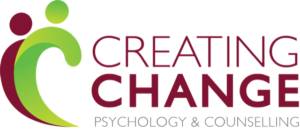
In everyday life, people behave in many different ways, but some aspects of behaviour are harder to see. For people with ADHD and Autism, there’s something called “masking.” This means they might hide or change parts of themselves to fit in with what’s expected in society. It’s like putting on a mask to hide who they really are because society has made them believe that there are parts of themselves that wont be accepted.
The Invisible Mask
Masking is a prevalent strategy among individuals with ADHD and Autism, transcending age, gender, and background. However, it’s often more noticeable in girls and women. Masking isn’t always something they do on purpose. It’s more like a habit they’ve developed to deal with the pressures around them, like at school or with friends. However, hiding their true selves can make it harder for them to get the help they need and leave them reliant on masking to get by. While everybody adjusts their behaviour based on different situations, masking goes beyond that and can be an exhausting practice.
Unveiling the Signs
Recognising masking behaviors is the first step towards understanding oneself or a loved one. Here are some signs to watch out for:
- Social Mimicry: Copying what others do to fit in. This might be interests, body language, or what they say and how they say it.
- Difficulty in Social Dynamics: Finding it hard to understand how friendships work and what people mean, especially when people aren’t straightforward.
- Preoccupation with Planning: Spending a lot of time getting ready for social situations, planning for conversations, what to wear, how to behave, and an exit strategy.
- Emotional Vulnerability: Getting upset when things don’t go as expected or after social interactions. They may also not understand why they are so upset.
- Behavioral Discrepancy: Acting differently in different places, like being outgoing at school but quiet and reserved at home.
- Sensory Sensitivity: Feeling overwhelmed in noisy or busy places.
- Emotional Regulation Challenges: Struggling to manage and express feelings, sometimes leading to shutting down or having meltdowns.
Recognising Masking for Children with ADHD and Autism
It’s really important for parents to recognise masking in their child’s behaviour. Sometimes, individuals aren’t diagnosed with ADHD or Autism until they’re adults. That’s why spotting these signs early is so crucial. When we understand these hidden signs, we can make sure children get the right help and support they need from the start.
Seeing the Signs – What to do?
Masking isn’t just about pretending to fit in; it’s a big sign of how hard it can be for people with ADHD and Autism to deal with society’s expectations. When we talk about these hidden signs, we can start to understand and be kinder to ourselves and others. Remember, behind every mask is a person who just wants to be accepted and supported for who they really are.
Long-Term Implications of Masking
Consistent masking can lead to significant mental health challenges, including anxiety, depression, and burnout. It’s emotionally exhausting to constantly hide one’s true self, leading to feelings of isolation and low self-worth. By acknowledging and addressing masking behaviors, we can help individuals build genuine connections and improve their overall well-being.
If you see these signs in yourself or your child, it’s important to talk to a professional. Our team are experts in ADHD and Autism and can help navigate what’s going on, and how to progress forward in the future with a customised plan for you. Testing and Assessments are available, tailored to each individual and their needs. Together, we can uncover the real you or your child hidden behind the mask.
Written by Paris Gibson – Psychologist – Creating Change Psychology
Psychology support in the Hills District, Western Sydney & Surrounds (including Rouse Hill, Bella Vista, Glenwood, Castle Hill, Kellyville, The Hawkesbury, Penrith Nepean, Blacktown, Epping, Ryde, Pennant Hills areas and surrounds)

